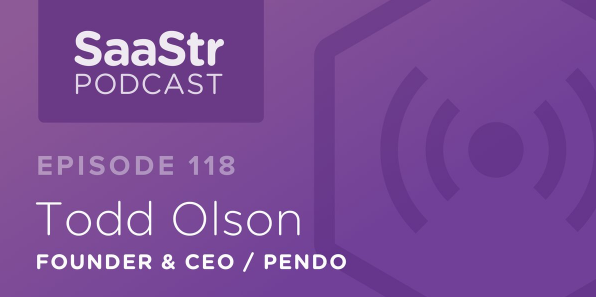Five years ago, if you asked any executive where they felt the most tension within their business, you would receive a pretty consistent answer: sales and marketing. Both teams have the same goals — generate leads and resonate with their target market but sometimes they struggle with the give and take. Determining how best to allocate resources and time meant the team needed to determine how to measure success. Since then, the SaaS industry has matured, and that answer has shifted from sales vs. marketing to customer success vs. product. Pendo’s CEO, Todd Olson discussed this shift during an episode of the SaaStr Podcast, hosted by Harry Stebbings.

The Rise of Customer Success
Why is customer success such an important aspect of so many SaaS companies now? “Customer success people are on the front lines.” Todd explained, “We all know that in SaaS, recurring revenue and retention is such a massive lever. You want a department solely focused on that lever.” In the past, most customer-focused departments were reactive but now that role must be proactive and initiate action to truly succeed. From new customer onboarding, new feature adoption, and customer surveys, the customer success role has completely changed.
“We all know that in SaaS, recurring revenue and retention is such a massive lever. You want a department solely focused on that lever.”
It makes sense that there is now more tension between customer success and other departments than ever before. Product — more specifically — has been impacted greatly by the rise of customer success. “As a product guy, we live and die by really hard tradeoffs,” Todd told Harry. “So having a department that is constantly communicating feedback can cause tension.”
Breaking through the Tension
“We have playbooks embedded in our culture that we immediately start getting more qualitative feedback behind [NPS].”
How does Pendo break through the tension? The same way we solve most problems, by putting the customer first and using data to drive decisions.
A key metric we use to measure success for the entire company is NPS. Todd shares, “To me [NPS] is a leading indicator of retention. It’s not perfect but it gives a good sense going into a renewal period of what the overall happiness is.” In order to get the most value out of NPS, Todd explains, “>you need to combine [NPS] with other metrics. For example, if someone gives me an NPS of 10 but they’ve only been in my product once in the last 30 days, then they’re just being nice.”
“But also having an action plan,” he continues. “If we get someone within a certain threshold we immediately fire off messages trying to connect with them and go deeper in certain areas.”
“We have playbooks embedded in our culture that we immediately start getting more qualitative feedback behind [NPS] and I think that has been hugely important. And honestly showing customers that we care and we’re listening.”

Company Wide NPS
“It’s me being connected to my customers around the clock and I love it.”
NPS is not a metric that should be solely tracked by customer success. It’s information that can be used across the company. With Pendo’s integration with Zapier, we have the ability to push NPS responses collected in-app into our team Slack. “We can comment on it, we can celebrate the successes, we can comment on the areas we need improvement.” Todd mentions on Pendo’s internal use of the NPS Slack integration. “It’s me being connected to my customers around the clock and I love it.”
Listen to the full Podcast here and subscribe to SaaStr Podcast for weekly interviews with SaaS leaders.


